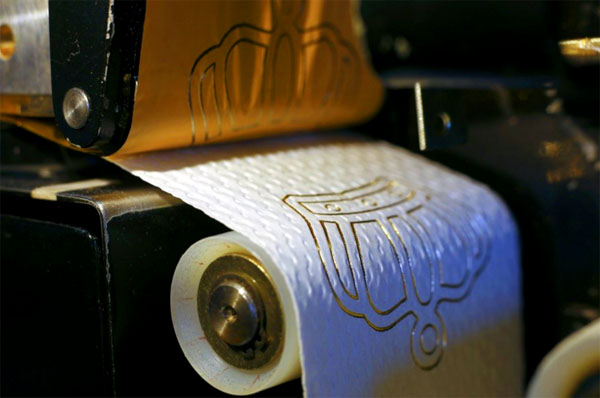U.S. Now Seeing Rise in Demand for Luxury Toilet Paper
According to an article this past week by the Washington Post, Washington, D.C., USA, sales in the U.S. of what the paper and tissue industry calls "luxury" rolls — anything quilted, lotioned, perfumed, or ultra-soft, from two- to four-ply — climbed to $1.4 billion last year, outpacing all other kinds of toilet paper for the first time in nearly a decade. The article cites data from market research firm Euromonitor International clearly showing a growing trend.
The luxury market is one-fourth the size of the standard TP market, but its prominence in "Big Wipe" is growing faster than many industry watchers expected. Luxury toilet paper sales have grown more than 70% in the U.S. since 2000, and they're expected to keep growing faster than all other categories every year through at least 2018.
"Higher growth is expected out of the luxury segment as the improved economy allows consumers to satisfy their desire for comfort," Euromonitor analysts wrote in a recent industry report about toilet paper's ‘increasing premiumization.’ "While the idea of ... luxury toilet paper may be slightly odd, (its) performance suggests otherwise."
Though it's a little pricier, analysts said, nearly everyone can still afford it, making it a surprising barometer for how confident Americans are that they can afford a minor splurge.
Before this previous year, luxury toilet paper's sales growth last beat out the other rolls in 2000 and 2005, both boom years for the U.S. economy and consumer spending. The luxury toilet paper business is expected to grow 9% over the next five years, compared with 6% for the cheapest "economy" lines.
Sales of the three-ply Quilted Northern Ultra Plush, which last year rolled out improvements to its "silkiness," jumped 30% in the U.S. in 2014 versus 2013, said Anna Umphress, a spokeswoman at Georgia-Pacific, which makes Quilted Northern and Angel Soft.
The ongoing struggle for toilet paper chains is convincing shoppers, especially in the U.S. market (where consumers have never been a part of the persistent luxury tissue fad that caught on in parts of Europe), that pricier luxury papers aren't just flushing cash down the toilet. Though even during a recession, analysts said, they saw shoppers who were more than willing to trade up for one of the few indulgences they could afford.
Pictured above: Gold plates stamp German golden crowned toilet paper on a production line in the EU country where super-luxury toilet paper (including colored and stamped brands) have been a popular segment of society for some time now. Some can now argue it's no longer a fad, but a lasting change marking how Western Europeans saw and accepted tissue in different ways than the traditional U.S. market where "wipes were wipes". In Germany, one can wipe as a king.
"Even in a down market, people want a little bit of luxury," Umphress said. "They may not be able to take a spa vacation. But they can make their home a little bit more spa-like."
Outside of standard toilet paper, sales of luxury rolls still trail thinner, cheaper economy brands, often bought in bulk for bathrooms in places like schools, malls, and gas stations. And in general, toilet paper rolls are shrinking, as paper makers attempt to recoup money lost from dropping sales on other products, like paper towels.
Luxury toilet paper is not without its challenges, of course. It doesn't exactly have the same word-of-mouth power of other high-end purchases. And because it offers mostly superficial benefits, analysts question just how long luxury toilet paper's winning streak can continue.
"Premiumization is a tool to drive that value, but there are limits to how far that can take you," said Svetlana Uduslivaia, Euromonitor's head of tissue and hygiene. "At the end of the day, for most consumers, toilet paper is toilet paper."
TAPPI
http://www.tappi.org/

